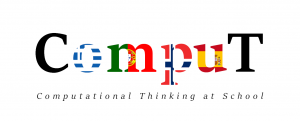LTTA 1 Meeting Agenda Rhodes, 27-31 JAN 2020
C1. Meeting Agenda Rhodes, 27-31 JAN 2020
BBC Representing an algorithm: Pseudocode and flowcharts
There are two main ways that algorithms can be represented – pseudocode and flowcharts. Representing an algorithm: Pseudocode Most programs are developed using programming languages. These languages have specific syntax that must be used so that the program will run properly. Pseudocode is not a programming language, it is a simple way of describing a set of instructions that does not have to use specific syntax. […]
BBC Algorithms
An algorithm is a plan, a set of step-by-step instructions to resolve a problem. In an algorithm, each instruction is identified and the order in which they should be carried out is planned. What is an algorithm? Algorithms are one of the four cornerstones of Computer Science. An algorithm is a plan, a set of step-by-step […]
BBC Abstraction test
Visit BBC site to take Abstraction test More tests on Computational Thinking by BBC
BBC Abstraction in practice
How to abstract Abstraction is the gathering of the general characteristics we need and the filtering out of the details and characteristics that we do not need. When baking a cake, there are some general characteristics between cakes. For example: a cake needs ingredients each ingredient needs a specified quantity a cake needs timings When […]
BBC Abstraction
What is abstraction? Abstraction is one of the four cornerstones of Computer Science. It involves filtering out – essentially, ignoring – the characteristics that we don’t need in order to concentrate on those that we do. In computational thinking, when we decompose problems, we then look for patterns among and within the smaller problems that make up the […]
LTTA 1 in Rodos Greece 27 to 31 January 2020
The first LTTA for the project was held in Rodos Greece Read more information here εδώ




